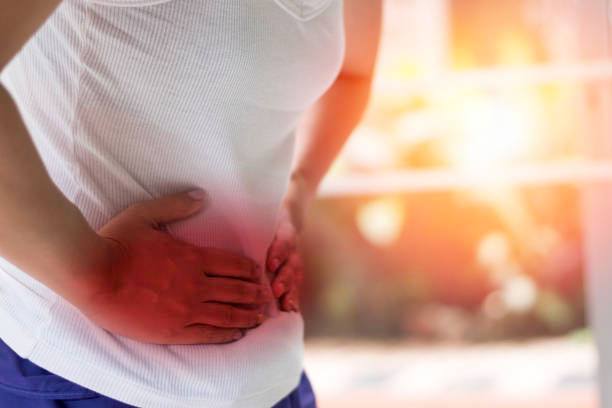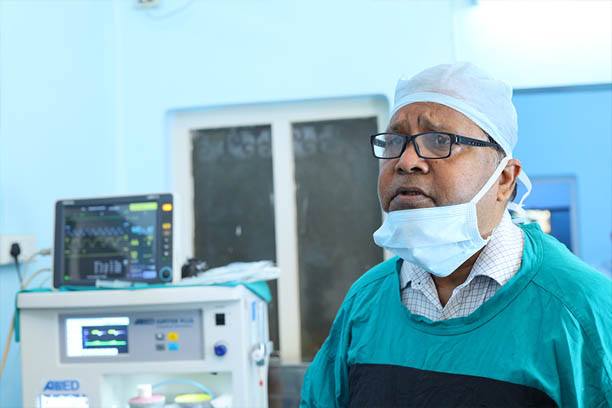Hernia Repairing Surgery in Pilibhit
HERNIA - What is a hernia?
If you have a hernia, it becomes necessary to treat it as soon as possible.
A hernia develops when an internal organ or another body part protrudes through the muscle or tissue wall that normally contains it. Most commonly, hernias occur within the abdominal cavity, between the chest and hips. If you experience a hernia, timely treatment is essential.
The most usual forms of hernia are:
INGUINAL HERNIA: This is the most prevalent type of hernia, with a higher incidence among men than women. In males, the inguinal canal serves as the pathway for the spermatic cord and blood vessels heading to the testicles, while in females, the inguinal canal contains the round ligament that supports the uterus. In this form of hernia, fatty tissue or a portion of the intestine protrudes into the groin area near the upper inner thigh.
FEMORAL HERNIA: This mostly affects elderly women and is less common than inguinal hernia. In this fatty tissue or a part of the intestine sticks out into the groin at the top of the inner thigh.
UMBILICAL HERNIA: When a fatty tissue or part of the intestine pushes through the abdomen near the navel it is umbilical hernia.
HIATAL(HIATUS) HERNIA: In this form of hernia a part of your stomach is pushed up into the chest cavity through an opening in the horizontal thin skeletal muscle that separates the abdomen from the chest; diaphragm.
INCISIONAL HERNIA: In incisional hernia, tissue from a remote abdominal or pelvic procedure protrudes through an abdominal scar.
EPIGASTRIC HERNIA: In this form of hernia, between the navel and the lower part of sternum, fatty tissue sticks out through the abdominal cavity.
SPIGELIAN HERNIA: If at the side of the abdominal muscle, the intestine pushes through the abdomen below the navel then it is spigelian hernia.
DIAPHRAGMATIC HERNIA: In this, organs inside the abdomen move into the chest cavity through the opening in the diaphragm.
What are the symptoms of a hernia?
A hernia in the abdomen or groin results in a noticeable lump that can be pushed back in or may vanish when lying down. This lump, known as a hernia, can re-emerge during actions like laughing, crying, coughing, straining during a bowel movement, or engaging in physical activity.

Few symptoms of hernia are listed as:
- Swelling in the groin or scrotum
- Suffering from increased pain at the bulge site
- Experiencing pain while lifting
- Sensation of aching
- Having signs of bowel obstruction or feeling full
How is a hernia treated?
When dealing with a hernia, it's advisable to seek consultation from a qualified doctor to determine whether surgical intervention is necessary. Hernias typically do not improve on their own. After assessing your condition, the doctor will provide guidance on the most suitable approach for addressing your hernia and may also refer you to a surgeon if needed.
After the surgeon checks you, and believes that repairing your hernia is important then he will choose the best form of repair that best suits your circumstances.

One out of these three types of surgery is performed for the treatment
- Open surgery
- Laparoscopic surgery
- Robotic hernia repair
Every surgery has advantages as well as disadvantages. Based on your condition, the surgeon chooses the most suitable for you.
After the successful completion of the surgery, the patient is instructed regarding:
- The diet to be followed
- Taking care of the incision site
- Avoiding physical strain
Regardless of the correction procedures, hernias might recur. This might be caused by tissue weakening or a long healing process. Recurrence of hernias is also linked to smoking and obesity.
General & Lap. Surgery
Headed by Dr. P. D. Singh, one of the finest surgeon in the region for General & Laparoscopic Surgeries with best in class and advance equipment.
Urological Surgeries
Dr. Rohit Singh at P.D.S. Hospital performs highly advanced urological procedures in the Kamayun and Rohilkhand region.
Training Programs
Our aim is to educate the new and practicing doctors, in various specialties, like laproscopic surgeries and urology related surgeries.
